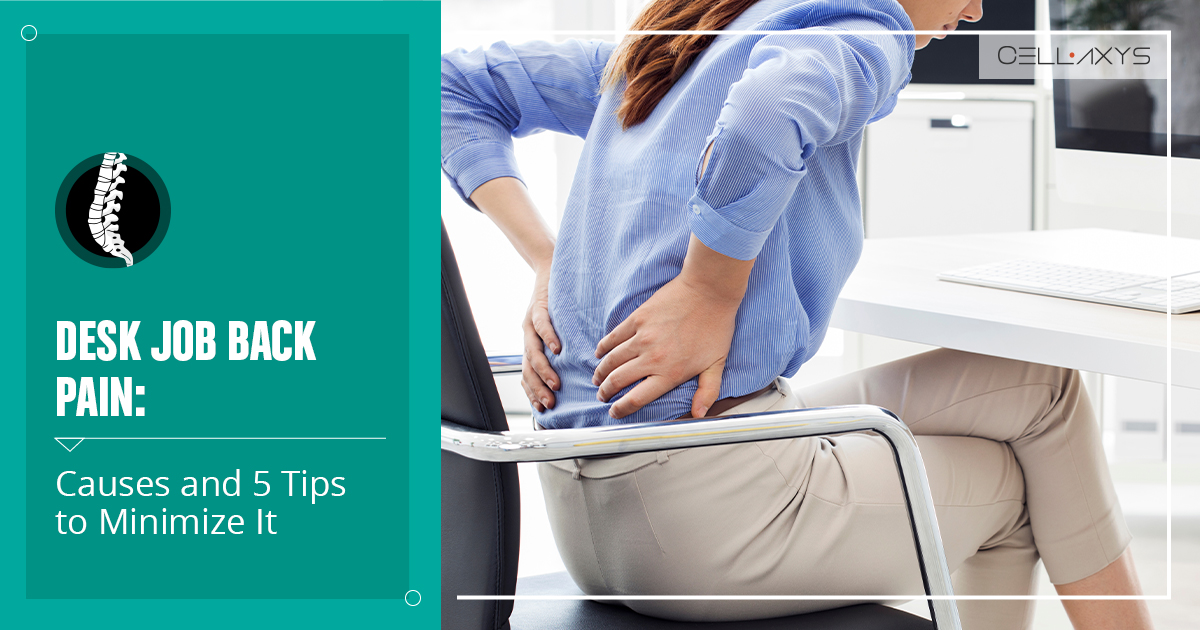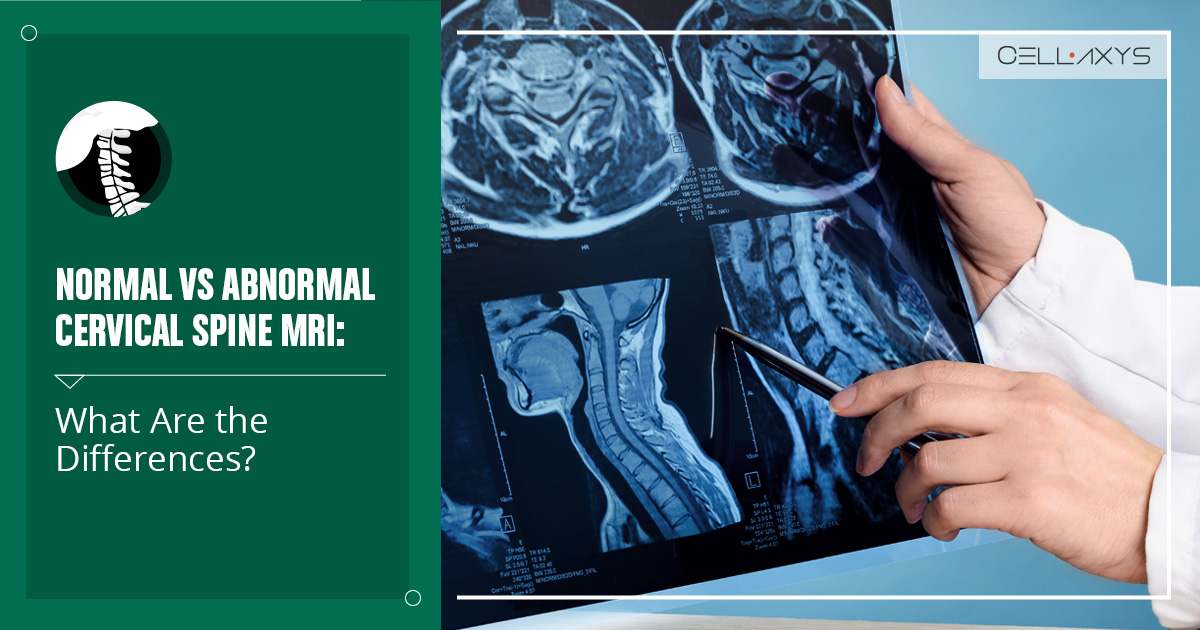Published on: March 8, 2024 | Updated on: March 3, 2024
Cervical instability or headache is one of the most common factors that hold us back from living our best lives. It can appear anytime, making your head, neck, and shoulders feel heavy, like you have something resting on top. While there is no definite treatment for headaches, many health experts consider transverse ligament injury as the biggest culprit.
The transverse ligament is present at the first cervical vertebrae (C1), holding the second cervical vertebrae (C2) that looks like the Washington Monument. The ligament serves as a seat belt for the bony process, known as the odontoid process.
The transverse ligament can get injured due to specific genetic issues or trauma, leading to compression of the membranes, canal, or nerves in the spinal cord. The condition is known as craniocervical instability, which causes brain fog, dizziness, and headache.
Anatomy of the Transverse Ligament
Our body consists of ligaments and tendons that connect bones and muscles. A ligament is a connective tissue band that attaches one bone to another. The cervical spine consists of 7 vertebral bodies, starting with C1 and preceded by C2, C3, C4… C7.
These vertebral bodies are the building blocks of the spine. The C1 is connected to the above part of your head, and the C2 to the below area. The structure of the C2 is quite unusual due to a vertical bony mass called the odontoid process.
The odontoid process touches the C1’s top area by extending upward from the C2. The transverse ligament of the Atlas (TLA) extends across the ring of the Atlas while keeping the odontoid process connected to the anterior arch. The TLA is a thick, powerful band concave in front, convex from behind, and broader in the middle.
The anterior part of the TLA has an articular cartilage protection that allows it to articulate with the odontoid process. The TLA is basically attached to a small tubercle from either side, present at the lateral mass of the Atlas’ medial surface.
When crossing the odontoid process, the ligament’s small fasciculus (or crus superius) extends upward, and another (crus inferius) prolongs downward from its posterior fibers.
The crus superius is located close to the Tectorial membrane, attached to the occipital bone’s basilar section. Meanwhile, the crus inferius is attached to the Axis’ posterior body surface. This is why the entire ligament is called the cruciform ligament of the Atlas.
The Functions of the Transverse Ligament
The transverse ligament retains the odontoid process in its original place while stabilizing the upper part of the cervical spine.
The ligament divides the ring of the Atlas into two parts. One larger part is located in the posterior region for transmitting the spinal nerves, cord, and membranes; the other smaller part is located in the anterior region containing the odontoid process. The transverse ligament prevents the C1 (atlas) from sliding over the C2 (axis).
The transverse ligament and odontoid process have a spinal canal behind them that contains the spinal cord, nerves, and membranes.
If a genetic disorder or natural degeneration damages the transverse ligament, it can cause instability in the upper cervical spine. This leads to compression of the spinal nerves, membranes, spinal canal, and spinal cord, making all of them severely irritated. This condition is called craniocervical instability (CCI).
Transverse Ligament Injuries
The main injuries or ruptures in the transverse ligament are linked to various upper cervical spine fractures. Another factor can be the loss of the ligament’s integrity, occurring from a tear in its middle area. It can also result from the ligament’s avulsion at the attachment to the C1’s lateral mass.
In the second case, the doctor can detect a minor fracture in the area where the ligament attaches (at the tubercle). A widened ventral atlantodental space can also lead to a rupture in the transverse ligament.
Doctors typically use MRI to diagnose injuries to the ligament. If ruptured, the results will show fluid signal intensity in the affected area, with fluid between the C1’s ventral arch and the dens. The most common symptom of these injuries is craniocervical Instability (CCI).
Craniocervical Instability (CCI): Common Symptoms
The symptoms of CCI vary depending on its causes and severity, including but not limited to:
- Headaches. Headaches can be mild and severe, occurring any time of the day and making your routine tasks difficult to perform.
- Brain Fog. It can affect your mental health and daily life performance.
- Fatigue or Dizziness. You won’t be able to walk or stand up with dizziness.
Most patients with CCI are advised to rest and take days off from work.
Treatment Options for Transverse Ligament Injuries (CCI)
The treatment options for transverse ligament injuries or CCI depend on the causes and symptoms. The doctor usually recommends at-home methods to ensure stabilization of the upper cervical spine.
Conventional Treatments
The most common at-home options include:
- Chiropractic Care. It helps restore the spine’s stability and movement, healing any injury or nerve compression in the affected areas.
- Physical Therapy. Your doctor may recommend special activities to help regain your spinal strength and stability. A professional physical therapist is needed for this purpose.
- Medicines. The doctor may suggest medicines to relieve your pain and stress or other symptoms of CCI.
If nothing works, you may have to go through surgery for the fusion of the skull’s base and the cervical spine. This procedure will ensure stabilization of the affected area, treating the symptoms of CCI all along.
Orthobiologic Methods
With advancements in regenerative medicine, doctors have found two non-invasive, less painful treatments for transverse ligament injuries. These are called cell-based therapies and platelet-rich plasma therapy (PRP).
At CELLAXYS, we perform both of these orthobiologic treatments with utmost care.
Cell-based Therapies
Our board-certified surgeons perform two types of cell-based or stem cell therapies. In both procedures, the doctor extracts healthy cells from your body, processes them, and reinjects them into the injury site. The choice between the two depends on the area the doctor decides to extract your healthy cells from.
- Minimally Manipulated Adipose Tissue Transplant (MMAT). When the healthy stem cells are harvested from your adipose tissue, the process is called MMAT.
- Bone Marrow Concentrate (BMAC). BMAC is when the doctor extracts highly concentrated cells from your bone marrow and reninjects them into the injury site.
Both procedures take 1.5 to 2 hours to complete.
PRP
In PRP, the doctor takes your blood sample, isolates platelets from it, processes them, and reinjects them into the injury site. Platelets are healing components of our body, performing three main functions, including:
- Releasing 10 growth factors in the blood
- Attracting healthy cells from the blood
- Producing a web-like scaffolding called fibrin to promote the development of new tissues
A high number of platelets in the injury site ensure early recovery and healing. PRP has been a popular spine and sports-related treatment, taking only 45 minutes to complete.
Cell-based therapies and PRP are outpatient procedures, meaning you can go home right after. Patients who have undergone these treatments at CELLAXYS have reported quick and painless recovery from transverse ligament injuries.
Sources
Footnotes
- FIELDING JW, COCHRAN GV, LAWSING III JF, HOHL M. Tears of the transverse ligament of the atlas: a clinical and biomechanical study. JBJS. 1974;56(8):1683-91.
- Dvorak J, Schneider E, Saldinger P, Rahn B. Biomechanics of the craniocervical region: the alar and transverse ligaments. Journal of Orthopaedic Research. 1988;6(3):452-61.
- Dickman CA, Mamourian A, Sonntag VK, Drayer BP. Magnetic resonance imaging of the transverse atlantal ligament for the evaluation of atlantoaxial instability. Journal of neurosurgery. 1991;75(2):221-7.
- Chu EC, Al Zoubi F, Yang J. Cervicogenic dizziness associated with craniocervical instability: a case report. Journal of Medical Cases. 2021;12(11):451.
- Bellabarba C, Mirza SK, West GA, Mann FA, Dailey AT, Newell DW, Chapman JR. Diagnosis and treatment of craniocervical dislocation in a series of 17 consecutive survivors during an 8-year period. Journal of Neurosurgery: Spine. 2006;4(6):429-40.
References
- Transverse Ligament of the Atlas. Physiopedia. Accessed 9/22/2023.
- Transverse Ligament. Science Direct. Accessed 9/22/2023.
- Craniocervical Instability (CCI). Center For Complex Neurology. Accessed 9/22/2023.
CELLAXYS does not offer Stem Cell Therapy as a cure for any medical condition. No statements or treatments presented by Cellaxys have been evaluated or approved by the Food and Drug Administration (FDA). This site contains no medical advice. All statements and opinions are provided for educational and informational purposes only.
Dr Pejman Bady
Author
Dr. Pejman Bady began his career over 20 years ago in Family/Emergency Medicine, working in fast-paced emergency departments in Nevada and Kansas. He has served the people of Las Vegas as a physician for over two decades. Throughout this time, he has been met with much acclaim and is now the head of Emergency Medical Services in Nye County, Nevada. More about the doctor on this page.
Dr Pouya Mohajer
Contributor
Pouya Mohajer, M.D. is the Director of Spine and Interventional Medicine for CELLAXYS: Age, Regenerative, and Interventional Medicine Centers. He has over 20 years of experience in pain management, perioperative medicine, and anesthesiology. Dr. Mohajer founded and is the Medical Director of Southern Nevada Pain Specialists and PRIMMED Clinics. He has dedicated his career to surgical innovation and scientific advancement. More about the doctor on this page.










